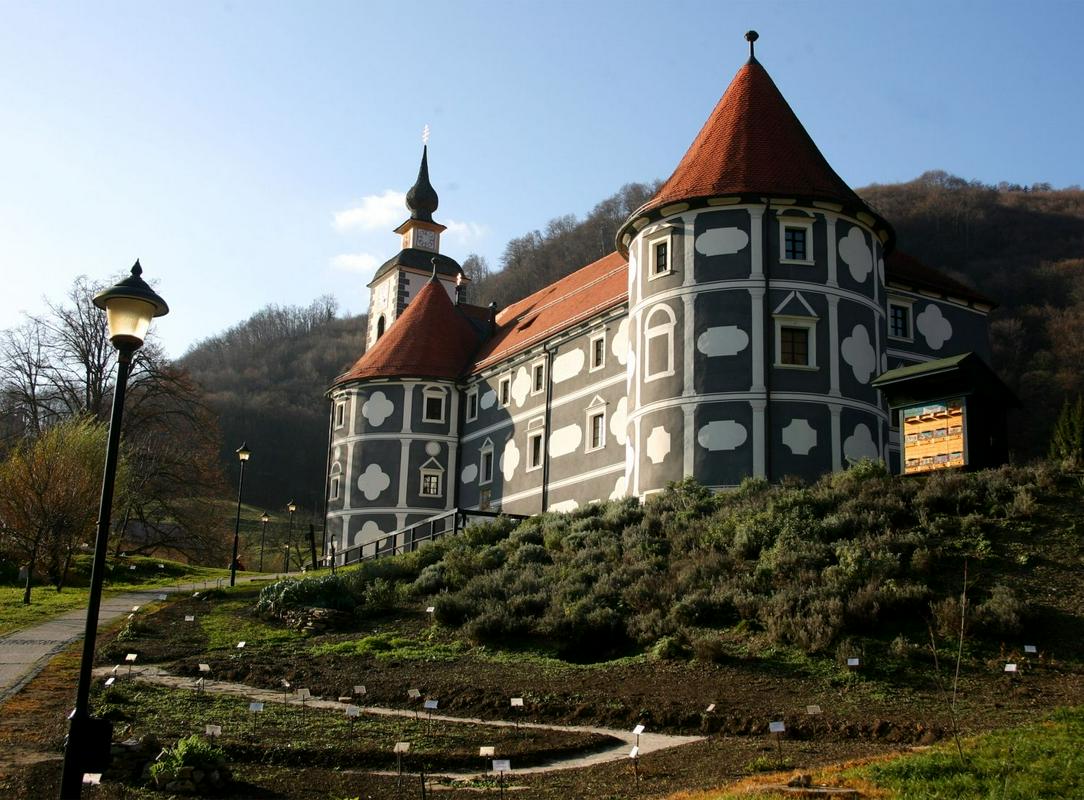
Surrounded by the Kozjansko hills in one of the most distant, untamed parts of the country, the castle was first mentioned in the 11th century. The structure’s current appearance dates back to the 16th century, when it was rebuilt in the Renaissance style by Count Tattenbach. After many changes in ownership, a 17th century nobleman donated the estate to the monks of the Pauline Order who had come to the Slovenian Lands from Croatia. The monks transformed the castle into a monastery and added a Catholic church of the estate. An artist named Anton Lerhinger painted the church’s frescoes, and the church was outfitted with one of the finest Braque altars anywhere in Slovenia. Finally, in 1764, a master organ builder from Celje was brought in to make a spectacular pipe organ.
The monks also became famous for their herbal remedies. Over the years, they built up one of the largest monastic pharmacies in this part of Europe – an important resource in the era before modern medicine.
For years, the lives of the monks changed little, but in 1782, the order was disbanded after anti-monastic reforms were introduced by Emperor Joseph II of Austria. The next owners, the Attems family of nobles, made some changes to the building, but much of it remained unchanged since its monastic times. After World War II, however, the castle was nationalized by the Communist authorities.
Perhaps surprisingly, the end of the 20th century saw a return of monastic life to the castle: After Slovenia’s independence, Franciscan monks took over Olimje. They now gladly give tours of the castle and its old pharmacy, one of the three oldest in Europe, as well as the church and its Baroque altar. For those who take part in the tour, the sweetest delight is left to the end. In the 19th century, Olimje Castle had one of the first chocolate-making workshops in the Slovenian Lands. Now, a small workshop continues that tradition – and serves as a reminder of the time when monks blazed the trail in many areas of life.

































































